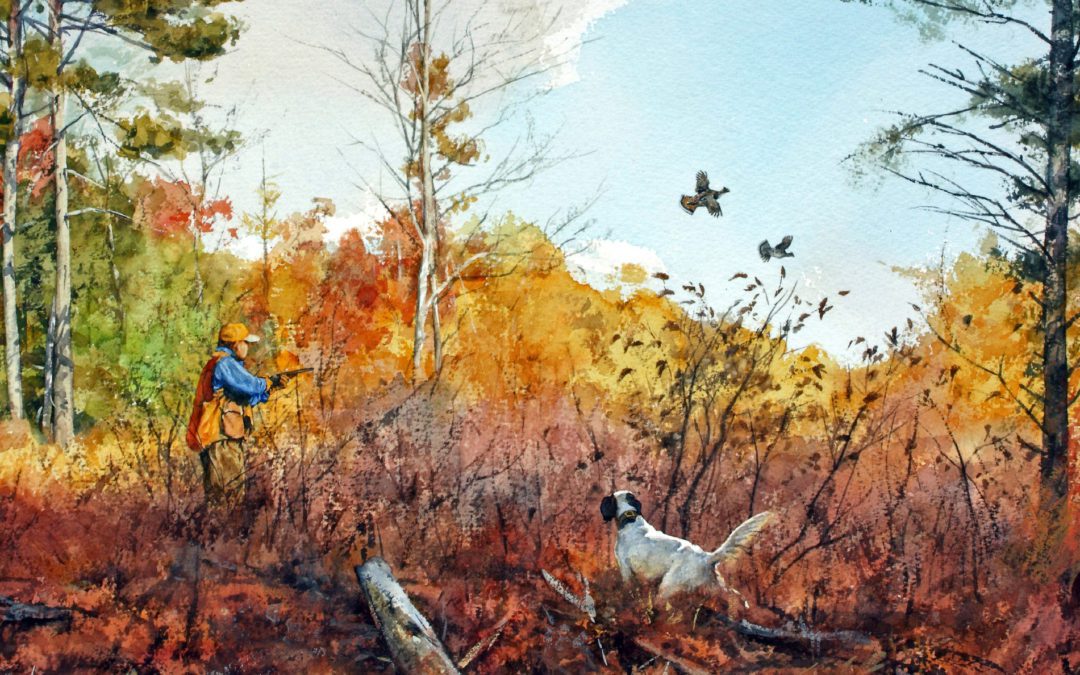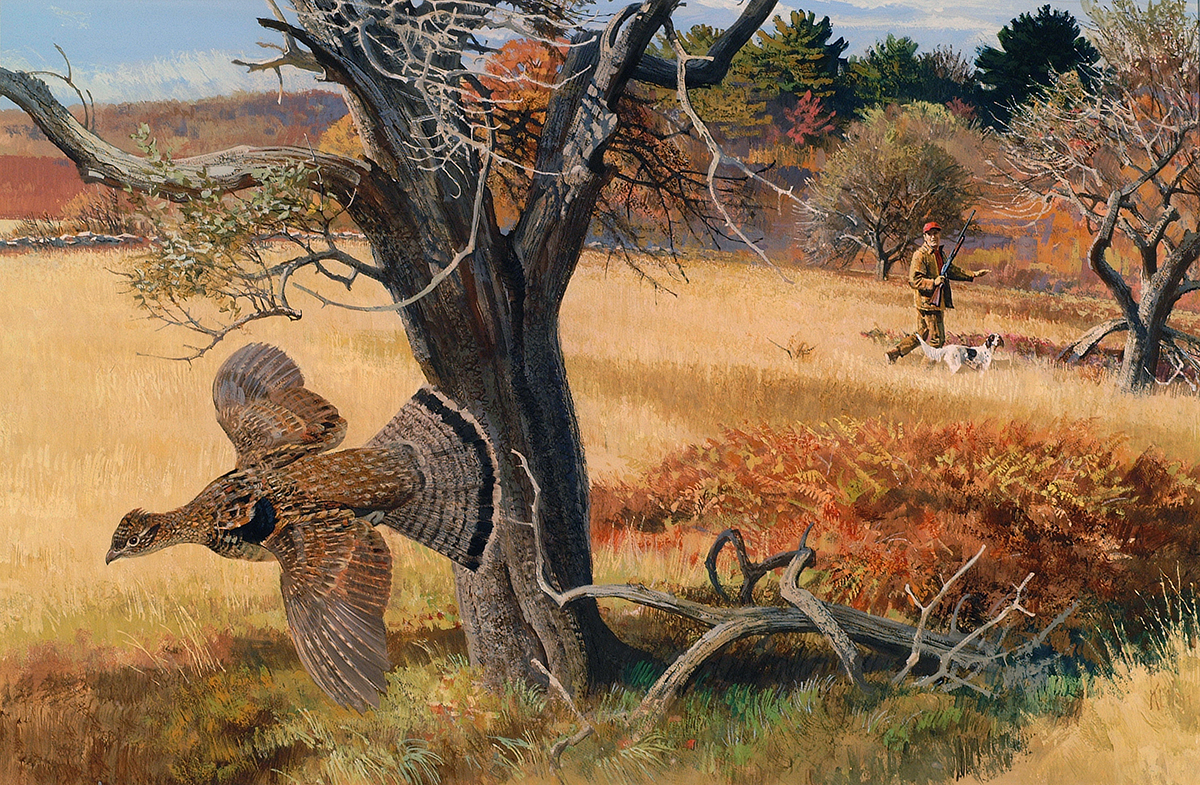The “other hand” is that with the passing of considerable time, I really have learned to slow down and enjoy it all. I’m as happy as a new puppy about the coming season. It’s shaping up to be mostly about grouse and woodcock in the early season. Minnesota, beginning in late September. The alders should be beginning to color with the very first tinges of autumn in the North Country.
As fall creeps southward in October and November, the stage will change, and the latter part of the season looks like it will be occupied mostly with quail in South Georgia, with an occasional interlude to haunt the ruffs in the mountains of western North Carolina.
No matter how it plays out, I’ll savor every minute! From the pre-season planning to the very last day, I plan to dawdle, dither and pussyfoot around, stretching it out as long as I can, making the very most of it.
By mid-season, my chocolate lab, “Coco the Wonder Dog,” should have recovered from her July ACL surgery and be ready to start putting birds into the air again. By then, I should be ready to start bringing them down to earth with a new/old double that is currently undergoing a bit of reconstruction.
A few years back, I spent a little time extolling the virtues of some of the lesser-known names in the English gun trade. I think I referred to them as “lesser lights” at the time. The gist of the series was that while many of us would like to gun our grouse and such with Purdeys, Hollands and Bosses, the cold hard truth is that most of us can’t.
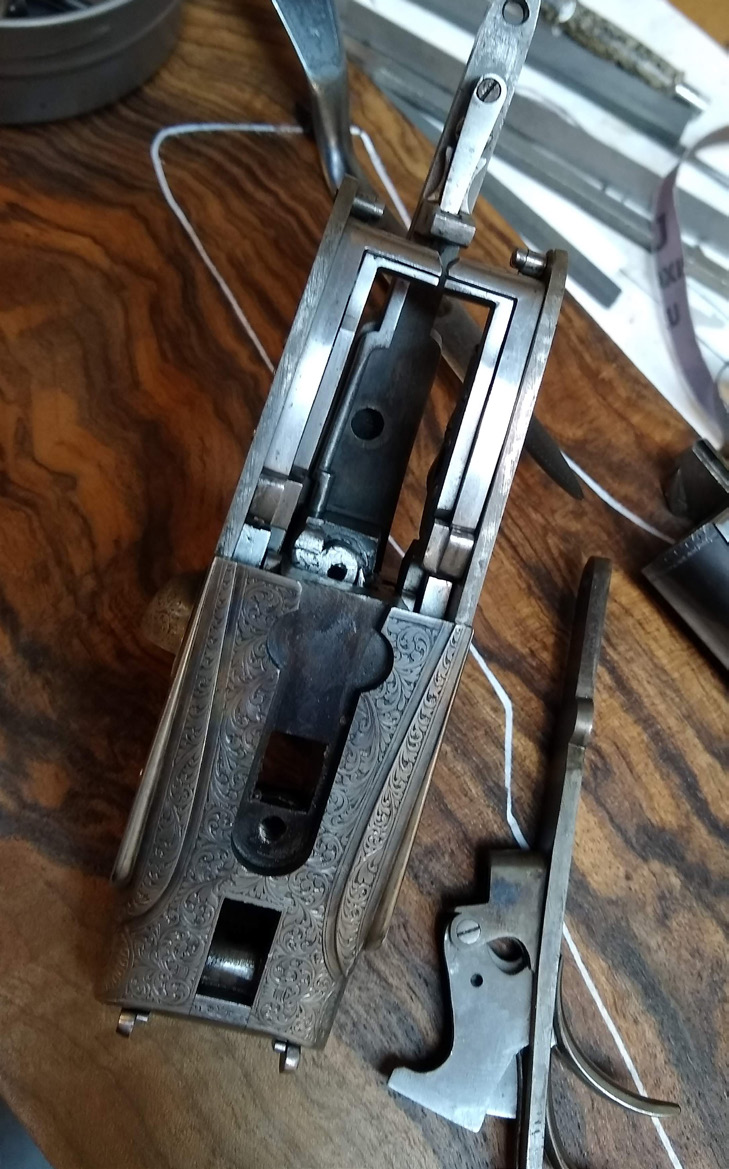
PHOTOGRAPH: TODD RAMIREZ, CUSTOM SHOP LLC.
That being said, there are still some pretty nice doubles out there that will allow the upland hunter the joy of gunning with a responsive, stylish double without breaking the bank or taking out a second mortgage. The class includes names such as Henry Atkin, who apprenticed under James Purdey; H.J Hussey; the Langs; Stephen Grant; Frederick Beesley and many more. There are simply too many of them to name in one sitting. I’ve owned and used many of their guns over the years, and can vouch for the fact that many of these makers built some very fine guns.
I shared some of my ideas with master gunmaker Todd Ramirez. Todd allowed as how it was quite possible to take an older, well-made, but also well-used gun and make it into a fine gun that would equal or even surpass the original version. Most importantly, it would last for another lifetime. The idea was sufficiently tantalizing that I figured, ”What the hell, it couldn’t hurt to talk about it. Could it?”
After a lengthy discussion of my pitifully small budget and a deep dive into my gun safe, searching for sale and trade items, I decided to look around a little to see if I might actually pull it off.
In the beginning, I had a pretty good idea of what I wanted, specifically a nice, light, all-purpose upland gun. One that wouldn’t be out of place in the grouse woods or on a quail plantation, but one that might work for pheasants, too. Probably a twenty. Or better yet, a nice 16. Something quick, that would handle nicely and throw a modest ounce or so of shot through improved and modified chokes.
I like both 20s and 16s, so I went to work looking for the right subject for our little project. As the poet (Burns, if I remember correctly) said, “The best laid schemes of mice and men go aft agley.”
In the first place, the price of good used 20-gauge doubles had escalated considerably since the last time that I went looking for a one. In the second place, I couldn’t find just the right 16. They’re out there, but they weren’t at that precise moment that I needed one.
After a couple of months, I found myself commiserating about my plight with Kirby Hoyt from Vintage Doubles.
“Why don’t you just go with a nice light twelve?” Kirby suggested.
“It’s a piece-of-cake to find one as light as any gun ought to be,” he noted. “Who can shoot a gun under six and one-half pounds, anyway? Regardless of gauge! I’ve got racks and racks of twelves that won’t break that weight and will handle as well as any twenty. And they’re a lot cheaper to boot!”
After I mulled and muddled over that for a while, I came to the realization that my fixation on getting a small-bore had blinded me to some really nice possibilities.
Michael Macintosh, whose byline preceded mine on these pages, had many times extolled the virtues of nice, light English 12s and shot a lovely John Wilkes that he dearly loved. Finally, I figured out that if it worked for Mac, it probably would for me too. So I called Kirby again.
“Whatcha got that would fill the bill, Kirby?”
“Are you familiar with William Evans?” “Of course, I’m familiar with William Evans. He worked at Purdey’s and Holland & Holland before going out on his own, just like Henry Atkin. Made some nice guns in his own right, but never matched the fame of his mentors.”
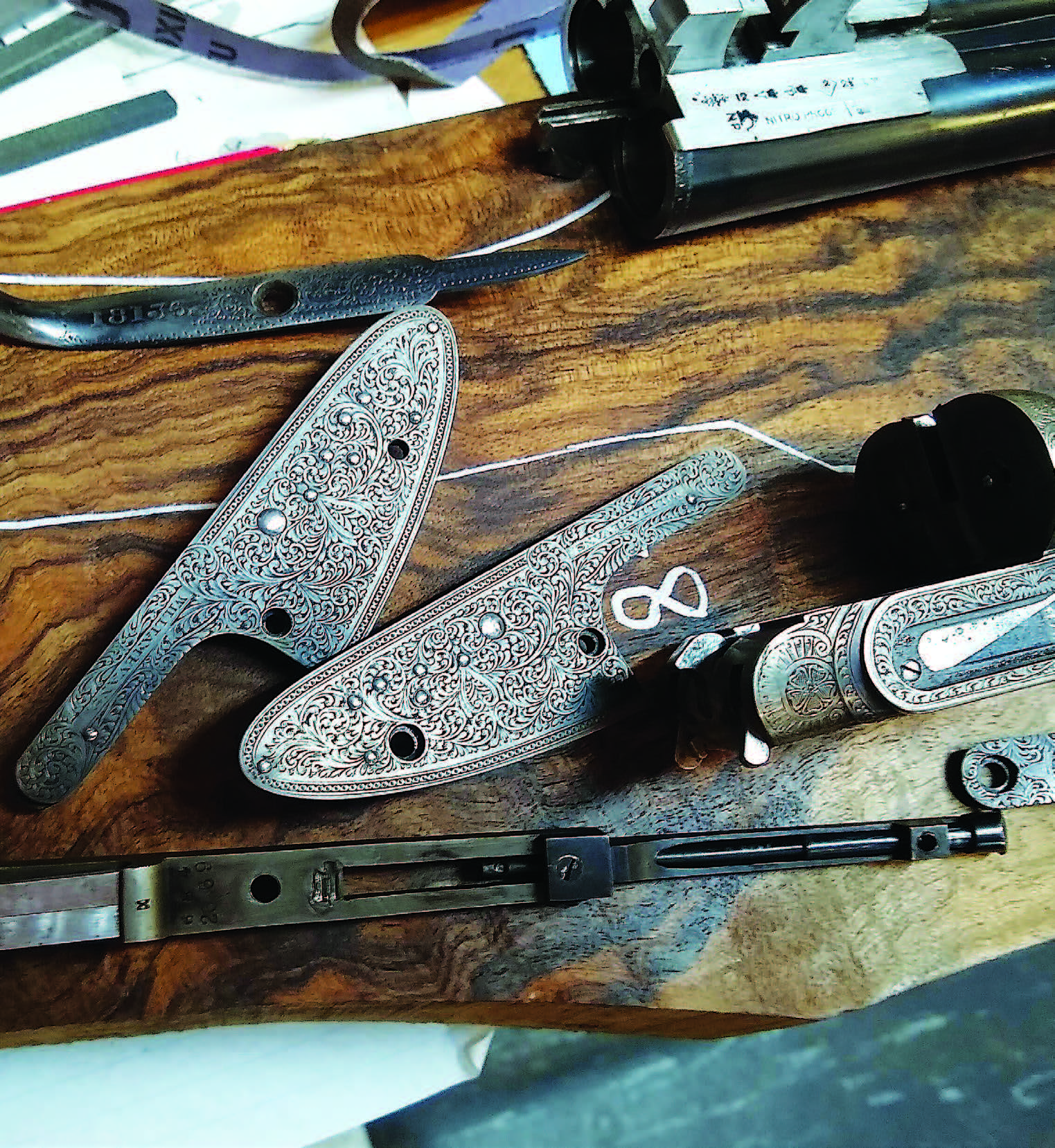
The first step in any gun restoration is to carefully inspect each part.
“If you’d like to look at one that I have, I think that it’s pretty close to what you need,” said Kirby. “It’s a looker, too, It’s got really nice large scroll that’s faintly reminiscent of Holland’s house pattern, a nice piece of wood, straight gripped, of course, with a splinter forend. It has great barrels, thirty inches, which I know you like, and if you took a couple of ounces out of the buttstock, it’d come in at six-and-a-half even. It’s got a little honest wear, but nothing that a little TLC wouldn’t cure. And it’s field-ready right now!”
To make a long story short, Kirby was right on all counts. The gun is light, it balances like a dream and the barrels ring like the bells of St. Mary’s on Easter Sunday. We patterned it behind Todd’s shop and then we completely tore it down on his workbench. The final verdict is that it’s as sound as a silver dollar, through and through. And built like they used to be.
As for the TLC, it’s in Todd’s hands now. We spent a couple of days laboring over the details of the restoration. Just a nip here and a tuck there, and it’ll be as shiny as a new penny. When Todd’s finished, the old boy will be fresh as new.
With a little choke-work, it will be as quick as any 20 and balance like a 16, and throw an ounce or so of 7½s into perfect, round patterns.
In my mind’s eye, the little William Evans is simply ideal. I can see it clearly, swinging effortlessly, floating like a prima ballerina. It will be vibrant and alive with the sheer joy of the season, tumbling ruffs and woodcock from those clear Minnesota mornings.
You know what the thing is? It’s all in the anticipation right now, but if the good Lord’s willing, it’s going to come. And it’s going to be just as good, because the only thing that’s better than being young and alive in the north woods in the fall is being old and alive in the north woods in the fall—with a fine new gun and your favorite dog.
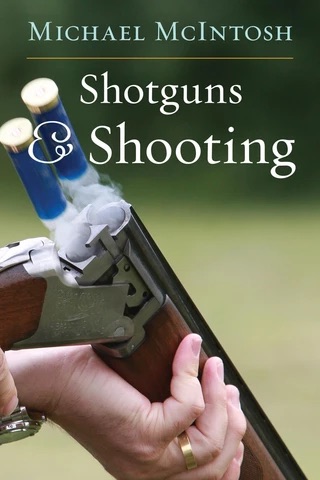 “Truly fine guns are as much works of art as poems, novels, or paintings,” writes acclaimed outdoor writer Michael McIntosh in this classic book. And who better to guide us through the world of fine guns than McIntosh. Here, he captured the whole gun–the gun as a combination of form, fit, and function. Divided into two sections, the first on the art of guns and gunmaking, and the last on the art of shooting, this book is, as McIntosh himself says, “a celebration of the gun.” Indeed, it’s a celebration no lover of fine double guns should miss. Shop Now
“Truly fine guns are as much works of art as poems, novels, or paintings,” writes acclaimed outdoor writer Michael McIntosh in this classic book. And who better to guide us through the world of fine guns than McIntosh. Here, he captured the whole gun–the gun as a combination of form, fit, and function. Divided into two sections, the first on the art of guns and gunmaking, and the last on the art of shooting, this book is, as McIntosh himself says, “a celebration of the gun.” Indeed, it’s a celebration no lover of fine double guns should miss. Shop Now
